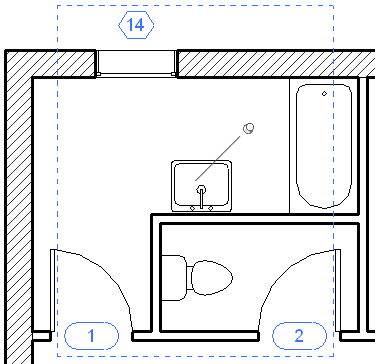 Revit Architecture
Revit Architecture Revit MEP
Revit MEP
 Revit Architecture
Revit Architecture Revit MEP
Revit MEPYou can group elements in a project or family and then place that group many times in a project or family. Grouping elements is useful when you need to create entities that represent repeating layouts or are common to many building projects.

Examples: Hotel rooms, apartments, or repeating floors
With each instance of a group that you place, there is associativity among them. For example, you create a group with a bed, walls, and window and then place multiple instances of the group in your project. If you modify a wall in one group, it changes for all instances of that group, simplifying the modification process.
You can create:






An attached detail group that includes tags for doors and windows
A group cannot contain both model and view-specific elements. If you select both types of elements and then try to group them, Revit creates a model group and places the detail elements into an attached detail group for that model group. The result is the same if you select both detail elements and a model group; Revit creates an attached detail group of the detail elements for that model group.
If elements cannot be copied together, they cannot be grouped together. See Copying Elements to the Clipboard for information on copy restrictions.